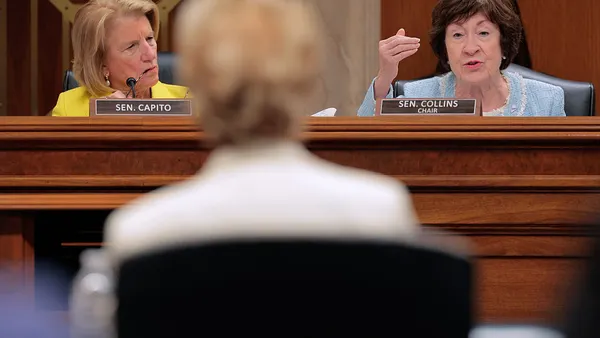Dive Brief:
- K-12 on-campus hate crimes and the number of schools with at least one hate crime nearly doubled between school years 2016-17 and 2017-18, with students' race or ethnicity being the most common motivation for the offenses, according to research from the Government Accountability Office released Nov. 24.
- Hate speech or symbols also were prevalent, with an estimated one in four students ages 12 to 18 — or about 5.8 million students — exposed to racial and homophobic slurs, anti-Semitic slurs and symbols, references to lynching or the Holocaust, and more during the 2014-15, 2016-17 and 2018-19 school years.
- Despite these and other victimization statistics, complaints of hostile school behaviors filed with the U.S. Department of Education were resolved at a faster pace in recent years due to more complaints being dismissed and fewer complaints being filed. Civil rights experts told GAO researchers changes to Office for Civil Rights guidance made them reluctant to file certain complaints on behalf of students.
Dive Insight:
Decisions by the Education Department in 2017 and 2018 to rescind guidance on nondiscriminatory discipline practices, Title IX protections for transgender students and standards of evidence for investigating alleged sexual assault and violence led to hesitancy in filing complaints with OCR, civil right experts told GAO.
For example, one organization said the withdrawal in September 2017 of the 2011 guidance on alleged sexual assault investigations, as well as the adoption of final Title IX rules in August 2020, created a lack of confidence in OCR.
The Biden administration is currently conducting a comprehensive review of Title IX regulations. In June 2021, the Education Department clarified it interprets Title IX’s prohibition on sex discrimination to include discrimination based on sexual orientation and gender identity.
Additionally, the Education Department and the U.S. Department of Justice are reviewing the 2014 Dear Colleague Letter on the Nondiscriminatory Administration of School Discipline that was rescinded in December 2018.
A legal organization interviewed by GAO said although that guidance specifically applied to school discipline, it perceived the rescission as a "broader shift in the department's investigations of alleged racial harassment violations."
The GAO report analyzed trends in a variety of hostile actions, including hate crimes, rape, physical attacks with a weapon and bullying. In general, bullying occurred in nearly every school, with about one in five students aged 12 to 18 — an estimated 5.2 million students in the 2018-19 school year — bullied each year.
Complaints of hostile behaviors filed with OCR dropped year-over-year by 9% during 2018-19 and 15% in 2019-20. Since the 2016-17 school year, OCR has resolved complaints of alleged civil rights violations in K-12 schools that involved hostile behaviors faster than in each previous year.
Other factors may impact the number of complaints filed each year. For example, GAO researchers say the emergence of COVID-19 during the 2019-20 school year and subsequent move to virtual learning could have caused a decline in the number of complaints about physical assault or harassment.
The GAO report also highlights increased efforts to address hostile behaviors at schools as well as the social-emotional well-being of students. Additional programs have included training for the prevention of bullying and violence, restorative circles, peer inclusion activities, diversity groups and positive behavioral intervention strategies training.













